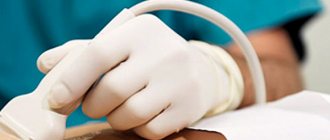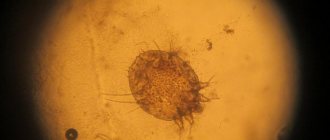In a normal state, the lymph nodes do not manifest themselves in any way, and not everyone even knows where they are. But sometimes situations arise when, under the influence of certain factors, these nodes become inflamed, increase in size and cause a lot of suffering to a person. Usually, spinal diseases are not included among the causes of such inflammation, but in rare cases there is a direct connection between them. Let's consider whether there are lymph nodes on the back, why pain occurs and what should be done in such situations?
Lymph nodes on the back
Location of lymph nodes
Lymph nodes are small (0.5-5 5 mm) formations consisting of connective tissue and serve to cleanse the lymph of various toxins, metabolic products and pathogens that penetrate the blood. There are more than 600 of them in the human body, and they are located in groups along the lymphatic vessels in the most important areas of the body:
- in the area of the neck and lower jaw;
- in the center of the chest;
- in the axillary region;
- in the groin area;
- near the elbows;
- in the abdominal cavity;
- under the knees.
Human lymphatic system and location of lymph nodes on the body
Depending on the depth of their location, lymph nodes are divided into deep and superficial. The former are found in the deep layers of connective and muscle tissue, the latter in the subcutaneous layer. Superficial nodes in the normal state are not visually noticeable, but can be easily felt by palpation, while deep ones can only be seen with hardware examination, for example, on an X-ray or MRI.
Superficial lymph nodes, when enlarged, noticeably appear under the skin
The lymph nodes closest to the spine are located in the chest cavity; they are called mediastinal lymph nodes and are deep. Also quite close to the spinal column (its lower part) are the lymph nodes of the peritoneum and groin. But they are all located in the front, but on the back there are no such formations, neither superficial nor deep. Therefore, if a ball-shaped or small lump is felt under the skin of the back, it is most likely a wen or a cyst of the sebaceous glands, and not an inflamed lymph node.
Bumps on the back
What are lymph nodes, their functions and significance
The lymphoid system, like other life support systems of the body, is very similar in structure to the root system of large plants. The vessels of the lymphoid system surround the entire human body, some organs several times. They are absent only in a few human organs and tissues.
Lymph moves from tissues and organs into capillaries. The capillary lining is very thin and has very good permeability to liquid lymph, as well as ingredients dissolved in the lymph, including some small cells and even microorganisms. From the capillaries, lymph enters the large vessels of the lymphoid system.
The vessels also have easily permeable walls with internal valves necessary to prevent the back passage of lymph into the tissue.
Through these vessels, the lymph approaches the group of lymph nodes. These groups of lymph nodes are called regional and are located in places where vessels of all life-supporting systems of the human body accumulate, for example, in the groin.
The vessels leaving the lymph nodes interact with the lymphatic ducts that enter large arteries. This is how tissue fluid enters the blood and is cleansed. Lymph nodes on the human body perform the most important biological functions, barrier and filtration, determined by the peculiarities of their structure.
Link between swollen lymph nodes and back pain
When the lymphatic system does not cope with its task, the nodes become inflamed, increase in size and cause very painful sensations. At first, the pain is localized around the inflamed node, but then it spreads further and can radiate to other organs and parts of the body, as, for example, pain from a stomach ulcer radiates to the thoracic and lumbar spine. That is, with mediastinal lymphadenopathy it can hurt between the shoulder blades and in the upper back, with damage to the inguinal nodes - in the lower back, coccyx or sacrum, and so on. The same manifestations are caused by lymphadenitis (inflammation) and lymphoma - malignant formations in the tissues and nodes of the lymphatic system.
Pain from inflammation of the cervical lymph nodes radiates to the back of the head and upper back
In this case, the causes of lymphadenopathy may be completely unrelated to pathologies of the musculoskeletal system. As a rule, most often disturbances in the functioning of the lymphatic system are caused by the following factors:
- infection (bacteria, viruses, fungi);
- malignant tumors and their metastases;
- lymph stagnation;
- helminthic infestation.
Important! Radiation therapy and long-term use of medications can provoke malfunctions of the lymph nodes, which negatively affects the immune system. When immunity is weakened, even a mild infection is a serious health threat, and the lymphatic system is the first to suffer.
Survey
Enlargement of the cervical lymph nodes, which is not accompanied by other symptoms, is an indication for consultation with a hematologist. When lymphadenopathy is combined with signs of damage to the respiratory and digestive systems, consultation with other specialists may be required. Diagnosis involves assessing the condition of pathologically changed lymph nodes and identifying the cause of the condition. The most valuable are:
- Ultrasonography
. Ultrasound of the lymph node is performed to study the morphological structure of the affected tissue; the method allows you to detect hyperechoic and hypoechoic zones. Additionally, ultrasound of the thyroid gland and sonography of the thymus are recommended to determine the root cause of lymphadenopathy. - Blood tests
. Infectious and hematological diseases, in which enlargement of the cervical lymph nodes is possible, are characterized by changes in blood counts. Patients are prescribed a standard general analysis, biochemical study, and determination of the level of acute phase indicators. - Lymph node biopsy.
Collection of cytological material from the affected organ followed by histological examination is recommended to verify the diagnosis. The method is primarily used for differential diagnosis of malignant tumors of lymphoid tissue and metastases with other diseases. - Lymphography
. A radionuclide study of the lymphatic system using the introduction of a special radiopharmaceutical is prescribed to study the pathways of lymphatic drainage and exclude oncopathology. The method is widely used for the neck area, since standard radiography is difficult.
A further list of studies is formed taking into account the patient’s complaints. Often an examination of the upper respiratory tract is required - pharyngoscopy, rhinoscopy, laryngoscopy. To confirm the infectious etiology of the process, specific serological reactions are performed (RIF, ELISA, PCR). If a connection between lesions of the cervical lymphatic structures and pathology of the thyroid gland is suspected, a blood test for triiodothyronine and thyroxine and scintigraphy with radioactive iodine are performed.
Back diseases and lymphadenitis
Can spinal diseases cause inflammation and enlargement of lymph nodes? There is no direct connection here, but with pathologies of the spinal column, microcirculation in the paravertebral tissues is often disrupted, for example, due to compression of the vessels through which blood and lymph pass. This leads to stagnation of lymph, accumulation of toxins, and the development of inflammation, which causes enlargement of lymph nodes and the appearance of pain.
Damage to the vertebrae and intervertebral discs often causes compression of the lymphatic vessels, which leads to stagnation of lymph and the development of inflammation in the lymph nodes
Such pathologies include, first of all, osteochondrosis, characterized by degenerative changes in the intervertebral discs and vertebrae. Most often, the cervical and lumbar regions are affected, near which there are groups of lymph nodes. With serious tissue damage, the reaction of the lymphatic system is immediately manifested by an increase in nodes, accompanied by inflammation and pain.
Osteochondrosis and inflammation of the lymph nodes
Other pathologies can cause the same reaction:
- Bekhterev's disease;
- spondylitis;
- spondyloarthrosis;
- radiculitis;
- sciatica;
- spinal cancer.
The development of a cancerous tumor in the spine also causes enlargement and inflammation of the lymph nodes
For information: with curvatures (scoliosis, kyphosis), lymphadenitis is usually not observed, unless the disease is complicated by a sharp decrease in immunity and serious disturbances in the functioning of individual organs and systems.
Diseases that affect the lymphatic system
There are diseases of the lymphoid system itself, or a consequence of other diseases. These diseases can affect individual organs of the lymphoid system, for example lymph nodes, or they can affect the entire system as a whole. Since one of the main tasks of the lymphoid system is to cleanse the body and produce antibodies to fight pathogens, it reacts to any infection that enters the body.
Diseases affecting the lymphatic system include acute respiratory viral infections, tuberculosis, rubella, syphilis, various oncological and autoimmune diseases, HIV infections, lymphadenitis, lymphangitis and many others, as well as diseases that arise from traumatic lesions of the lymphoid system, not very good heredity, bad habits and natural environmental factors.
Lymphadenitis
The most common and most common disease of the human lymphatic system. This inflammation occurs in the lymph nodes and is caused by infection, virus, or trauma to the lymph nodes. Almost always, inflammation of the lymph nodes with lymphadenitis is manifested by its thickening, swelling, redness of the skin around the lymph nodes, and pain on palpation.
ARVI
Some of the most common infections are:
- cytomegalovirus;
- adenoviral;
- rhinovirus;
- chicken pox;
- rubella.
With infectious mononucleosis, the main symptom is an increase in cervical lymph nodes. For other viral infections, an increase in several groups of lymph nodes on the human body is typical, most often lymph nodes of the neck, less often lymph nodes of the head.
Tuberculosis
LU tuberculosis is a very serious human disease. Most often it develops together with diseases of the lungs and respiratory system. Surprisingly, but true, women are more often susceptible to tuberculosis. LU tuberculosis causes global changes in lymphoid tissue. Damage to lymphoid tissue begins when bacteria enter tuberculosis (Koch bacilli).
Tuberculosis develops in lymph nodes with a significant difference than in other tissues and organs. With lymph node tuberculosis, not only the size of the lymph nodes increases, but there is also a multiple increase in the production of lymphocytes. If, on the one hand, this improves the quality of lymph, then on the other, if there is a large amount of it in one place, granulomas may begin to form.
With tuberculosis of lymph nodes on the human body, in 70-80% of cases, cervical lymph nodes are affected, and only in 15-20% are axillary lymph nodes and inguinal lymph nodes enlarged. Only in isolated cases are other lymph nodes affected.
Syphilis
Syphilis is an infection caused by a pathogenic microbe - Treponema pallidum. A surprising feature of this disease, Treponema pallidum affects only humans. Lymph nodes on the human body become enlarged, just like with other infections. The increase in lymph nodes of that particular group completely depends on the site of infection - chancre.
When it appears on the genitals, the first reaction will be in the inguinal group of lymph nodes and the pelvic group of lymph nodes. When a chancre appears on the chest, there is an immediate reaction in the axillary lymph nodes and periosternal lymph nodes; if chancre affects the lips or tongue, the first reaction is visible on the cervical lymph nodes, facial lymph nodes, and head lymph nodes.
Less commonly, when chancre appears on the extremities, the lymph nodes of the arms or lymph nodes of the legs may enlarge. Very often, LUs are connected to each other and can form chains and entire conglomerates. Syphilis is congenital and can be transmitted from mother to child.
The consequences of congenital syphilis can be very dire. When the process develops in utero, this microbe lives and multiplies in the child’s body. Consequently, treponema circulates throughout the child’s lymphatic system, damaging his internal organs and tissues.
Rubella
The virus initially enters the nasopharynx, then into the blood and spreads through the circulatory and lymphatic systems throughout the human body. Naturally, the immune system reacts to the pathogen with inflammation of the lymph nodes, as well as numerous rashes on the skin. The lymph node is clearly defined under the skin.
In rare cases, in infected people, the spleen and sometimes the liver become enlarged due to the accumulation of the virus inside itself. The peculiarity of the virus is that a person has persistent immunity for life, after recovery.
The rubella virus has a clearly defined cytopathic effect, that is, it affects the cytoplasm and embryonic cells, which very often leads to various mutations in these cells and fetal malformations. Therefore, the disease poses a great danger to expectant mothers during pregnancy.
HIV infection
HIV infection is one of the newest diseases in the modern world. The disease is widespread on all inhabited continents of the planet, in all races and age categories of people. The clinical picture is also very diverse, with many different pathologies.
This also applies, of course, to the immune system and pathologies of lymph nodes in HIV infections. The study of the symptoms accompanying this infection, together with a quick response to the incidence, is the main direction for the prevention and diagnosis of HIV
A very common symptom accompanying HIV infection is lymphadenopathy. This disease is a direct attack on the human immune system. When the immune system is damaged, widespread inflammation of the lymph nodes on the human body occurs, since they are the first to respond to HIV and the virus directly multiplies in the lymph nodes.
The infection most affects the cells - lymphocytes.
Especially their subtype – T-helpers. These cells are responsible for the strength of the immune response. DR in HIV does not increase immediately after infection, but after a long period of time, up to several months or years. But when HIV infection gains strength, and the increase in DR occurs everywhere. Then the recovery of DR and HIV infection is significantly complicated.
Oncology
Oncology of the lymphatic system, mainly lymph node cancer, is a disease with systemic development and covering the entire body. The pathology is initially similar to an autoimmune process. The tumor can affect both superficial lymph nodes and deep lymph nodes. The most common localization of lymphoma is in the armpits, collarbone and groin.
Lymph, by cleansing and at the same time nourishing cells, helps remove infections from the body, and this is a huge burden on the body and its lymph system. Very often the immune system cannot cope with such loads. It is very important to identify signs of pathology in advance, in the early stages, namely changes occurring in the lymph nodes.
There are a lot of direct and indirect factors that accelerate the possibility of developing oncological processes associated with oncology of the lymphatic system. These include: age (with age the risk of getting sick increases), various pathologies of the immune system, heredity, environmental and natural factors.
Lymphoma is a very aggressive disease and multiplies at a high rate throughout the human body. In this case, the affected cells accumulate and concentrate in the lymph nodes.
Autoimmune diseases
Autoimmune diseases include those that are provoked by the person’s own immune system. With these diseases, a malfunction occurs in the body or a malfunction of the immune system, and as a result of these malfunctions, blood leukocytes begin to fight certain cells of our body, considering them harmful and foreign.
Autoimmune diseases are systemic and complex. The complex and systemic nature of these diseases is manifested by the fact that both a separate organ, some kind of life support system, and the entire body as a whole can be affected.
Failures in which autoimmune diseases can occur can be divided into several subgroups. Subgroups include external and internal causes, in which white blood cells become aggressive and multiply completely uncontrollably.
- Internal reasons. Internal causes include certain mutations that occur in genes of types I and II, when leukocytes cease to identify a certain type of cell in the body. Lymphocytes, as one of the varieties of non-granular leukocytes, are orderly cells that can begin to multiply uncontrollably and cause various autoimmune diseases. Internal causes include the consequences of very severe, long-term infectious diseases and their long-term drug treatment, after which the immune system fails and cells begin to multiply uncontrollably.
- External reasons. External causes include harmful effects from the environment, for example, radiation, electromagnetic or solar radiation; water and air pollution, industrial emissions.
Symptoms
You can determine lymphadenopathy and lymphadenitis yourself only if the superficial lymph nodes are affected - in the neck, armpits or groin. The main signs are the formation of visible tubercles under the skin, dense, painful and mobile to the touch. Their appearance is usually accompanied by fever, general malaise, redness and swelling of adjacent tissues. Sometimes additional problems with breathing, tachycardia, the appearance of a rash in the area of the lump, and skin itching are observed.
Diagnostic methods
The main task of diagnosis for enlarged lymph nodes is to identify the real cause among many possible ones. An initial examination and history taking are ineffective here; the doctor can only confirm the presence of changes in the superficial nodes. Therefore, the patient needs to undergo a detailed examination.
Table. Diagnostic methods for enlarged lymph nodes
| Type of study | What does it show |
| Blood analysis | The level of red blood cells, lymphocytes, ESR, as well as the presence/absence of viral and bacterial infections are determined. |
| Provides a three-dimensional image of the affected area, which allows you to clarify the size of deep lymph nodes, identify neoplasms, and also determine whether there are pathologies of the spine. |
| Gives a more accurate result compared to fluoroscopy. Layer-by-layer images help to identify the slightest structural changes both in the lymph nodes themselves and in adjacent tissues and the spinal column. |
| Allows you to determine the location of lymph nodes, their size, number, structure. |
In some cases, when these studies do not reveal the exact cause, the patient undergoes a lymph node biopsy.
How to treat
The treatment method is selected exclusively by a specialist after diagnosis. Therapy is aimed mainly at eliminating the cause of the disease, due to which the condition of the lymph nodes is quickly restored. Of course, in case of severe pain, at the first stage of treatment, means are used to relieve pain, relieve inflammation and swelling in order to make the patient feel better. Depending on the cause of the enlarged nodes, drug therapy may include:
- antibiotics;
- antiviral agents;
- NSAIDs.
If inflammation of the lymph nodes is caused by a bacterial infection, the patient is prescribed antibiotics, for example, Amoxicillin tablets.
With the development of lymphadenopathy due to back diseases, the use of exercise therapy and massage as therapeutic therapy is contraindicated, because any impact on the inflamed areas provokes an increase in symptoms and threatens even greater complications. In such cases, the pain syndrome is first relieved, compression of the nerve endings is eliminated, and when the lymph node shrinks to normal size, standard treatment is prescribed.








